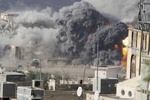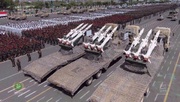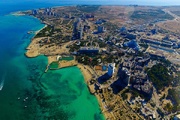The system, which seeks to boost transparency, create competitiveness among exchange shops and a secure environment for traders, was aimed to create the ground for importers to supply their required foreign currency without specific problems and for exporters to re-inject their earned foreign currency to domestic forex market.
Now, while the NIMA-set exchange rate was to be the base rate for setting the prices of commodities in domestic exchange markets, what is seen in these markets indicates that NIMA is not considered the basic source for setting the rate and it seems that different markets are ignoring it and somehow each of them follows its own way of setting the prices.
Some examples for ignoring NIMA rate in the commodity markets are round bar, pellet, and highly-demanded polymer grades such as polypropylene, as round bar and pellet have been recently traded at prices based on the rates lower than what NIMA has set, while trades of polymer products have been based on rates higher than NIMA rates.
Another criticism to NIMA is the low flexibility of this system.
At the moment, prices are discovered base on two complementary process in Iran Mercantile Exchange (IME); one is setting base prices based on the NIMA rate while taking the global prices into account and the other one is setting prices based on demand/supply competition.
But the process of setting prices based on NIMA rate lacks enough flexibility for lower prices; so a buyer may be forced to wait one or several weeks for the global prices to decrease so that he/she can benefit from such condition to be able to act successfully in the export markets.
While NIMA was initially the major source of rates, the condition has changed in a way that it seems not to play its real role, while it has also some other weaknesses that are unpleasant for all economic sectors.
Meanwhile, the private sector says that NIMA should not be a source for supply of foreign currency for imports of raw materials.
Masoud Khansari, the head of Tehran Chamber of Commerce, Industries, Mines and Agriculture (TCCIMA), believes that regarding the urgent need of producers for the raw materials and also for machineries, setting up a mechanism for imports of such goods not relying on receiving foreign currency through NIMA is now seen more necessary.
He says that the producers require to supply their raw materials at the least possible time, but under the current condition it will be a long-term process if they want to take action through NIMA.
NIMA has some weaknesses, but Central Bank of Iran Governor Abdolnaser Hemmati has said that it is a pivot of the foreign currency exchange and trade related activities in the country and it will not be omitted from the forex market at all.
Last week, the official dismissed the news that NIMA would stop activity once the integrated forex market is established.
While this system will not stop its activity, it has been ordered and emphasized that 50-60 percent of the foreign currency earned from the exports should be presented in NIMA, the CBI governor stressed.
NIMA will not be omitted, but its gaps can be filled through an integrated forex market.
Behzad Khosravi, an economist, is of the opinion that launching the integrated forex market will lead the NIMA rate, which is seemed somehow “imposed’, toward the real rate.
The so-called integrated market is expected to be launched by the end of current Iranian calendar month of Khordad (June 21), aiming to explore the real volume of demand and supply in the foreign currency market through a new mechanism, which is to organize the transactions in the foreign currency exchange market between the exchange shops.
MNA/TT






















Your Comment